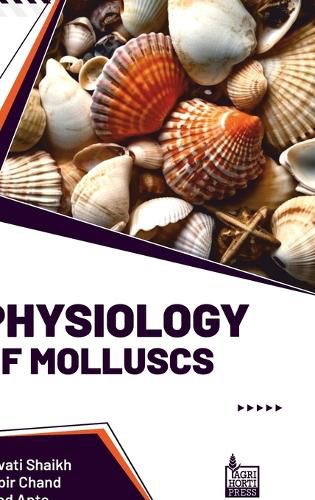Readings Newsletter
Become a Readings Member to make your shopping experience even easier.
Sign in or sign up for free!
You’re not far away from qualifying for FREE standard shipping within Australia
You’ve qualified for FREE standard shipping within Australia
The cart is loading…






1.Overview of Molluscs: Introduce the diverse phylum Mollusca, encompassing a wide range of species including snails, clams, squids, and octopuses, and highlight their ecological importance and economic significance.
2.Morphology and Anatomy: Discuss the general morphology and internal anatomy of molluscs, including characteristic features such as the muscular foot, visceral mass, and mantle cavity, adapted for various locomotion, feeding, and protection strategies.
3.Circulatory System: Explore the circulatory system of molluscs, which typically includes a heart, blood vessels, and a simple open circulatory system, facilitating the distribution of oxygen, nutrients, and waste products throughout the body.
4.Respiratory System: Examine the respiratory structures and mechanisms of molluscs, which vary among different taxa and may include gills, lungs, or skin respiration, enabling gas exchange and maintaining oxygen supply.
5.Nervous System: Discuss the organization of the nervous system in molluscs, including centralized ganglia and nerve cords, and highlight behavioral adaptations and sensory capabilities such as chemoreception, photoreception, and mechanoreception.
6.Reproductive Biology: Explore the diverse reproductive strategies exhibited by molluscs, including external fertilization, internal fertilization, and various modes of larval development such as direct development and complex life cycles involving larval stages.
7.Feeding and Digestion: Address the feeding habits and digestive processes of molluscs, which vary depending on the species and may involve filter feeding, grazing, predation, or scavenging, with specialized structures such as radulae and digestive glands.
8.Physiological Adaptations: Discuss physiological adaptations of molluscs to their respective environments, including osmoregulation in marine, freshwater, and terrestrial habitats, as well as responses to temperature, salinity, and other environmental factors.
$9.00 standard shipping within Australia
FREE standard shipping within Australia for orders over $100.00
Express & International shipping calculated at checkout
1.Overview of Molluscs: Introduce the diverse phylum Mollusca, encompassing a wide range of species including snails, clams, squids, and octopuses, and highlight their ecological importance and economic significance.
2.Morphology and Anatomy: Discuss the general morphology and internal anatomy of molluscs, including characteristic features such as the muscular foot, visceral mass, and mantle cavity, adapted for various locomotion, feeding, and protection strategies.
3.Circulatory System: Explore the circulatory system of molluscs, which typically includes a heart, blood vessels, and a simple open circulatory system, facilitating the distribution of oxygen, nutrients, and waste products throughout the body.
4.Respiratory System: Examine the respiratory structures and mechanisms of molluscs, which vary among different taxa and may include gills, lungs, or skin respiration, enabling gas exchange and maintaining oxygen supply.
5.Nervous System: Discuss the organization of the nervous system in molluscs, including centralized ganglia and nerve cords, and highlight behavioral adaptations and sensory capabilities such as chemoreception, photoreception, and mechanoreception.
6.Reproductive Biology: Explore the diverse reproductive strategies exhibited by molluscs, including external fertilization, internal fertilization, and various modes of larval development such as direct development and complex life cycles involving larval stages.
7.Feeding and Digestion: Address the feeding habits and digestive processes of molluscs, which vary depending on the species and may involve filter feeding, grazing, predation, or scavenging, with specialized structures such as radulae and digestive glands.
8.Physiological Adaptations: Discuss physiological adaptations of molluscs to their respective environments, including osmoregulation in marine, freshwater, and terrestrial habitats, as well as responses to temperature, salinity, and other environmental factors.